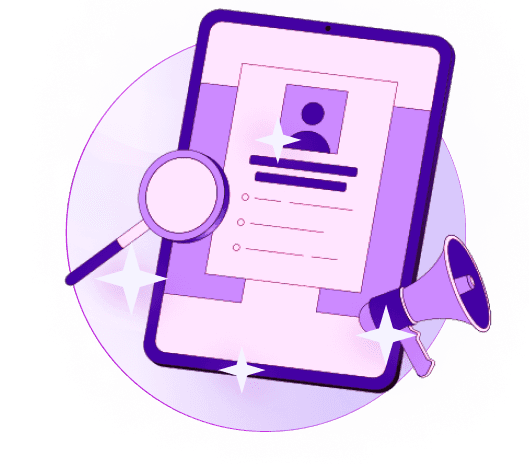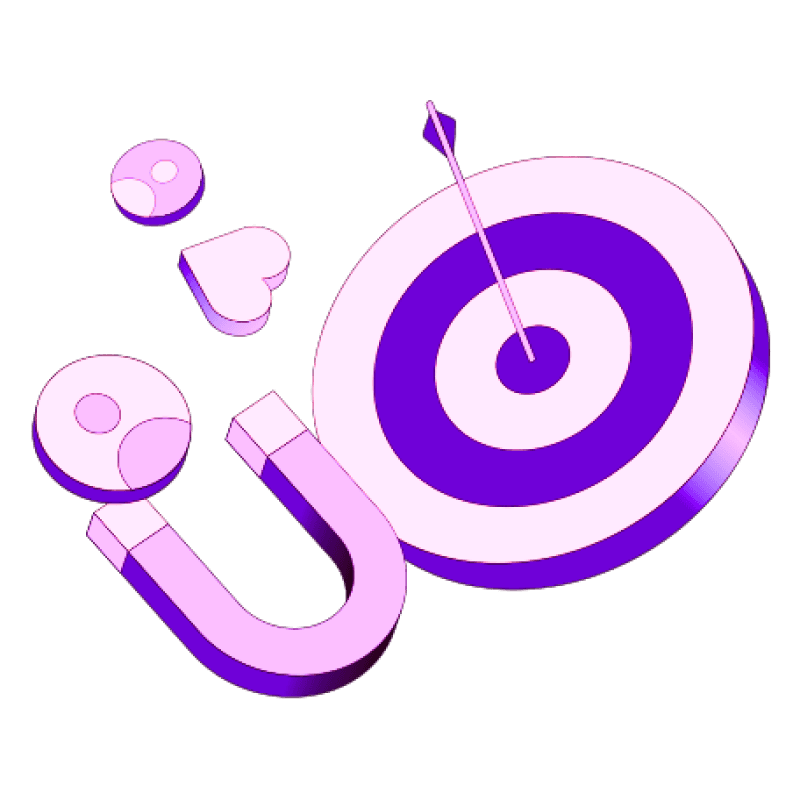Blogs
Articles

How to Build a Prospecting Workflow That Actually Gets Responses
Sales representatives find prospecting the most challenging part of their work - 42% rank it as their biggest hurdle.
The industry's top performers dedicate 6 hours weekly to prospect research. Time alone doesn't guarantee success. A well-laid-out prospecting workflow that blends tailored approaches with streamlined processes makes the real difference.
In this piece, we'll show you how to build a prospecting workflow that fills your pipeline and generates genuine responses. Our comprehensive guide covers everything from identifying ideal prospects to executing tailored outreach in multiple channels - a strategy that can boost purchase rates by 287%.
Your prospecting journey will shift from challenging to rewarding.
Define Your Ideal Prospect
A clear definition of your ideal prospect at the start of your prospecting workflow saves time and energy. Research shows 50% of potential prospects simply don't fit what you sell. A detailed Ideal Customer Profile (ICP) creates a filter that helps you focus on high-potential opportunities.
Use firmographic and technographic data
Firmographic data forms the foundations of your ICP with company-level characteristics like industry, revenue, employee count, and location. These firmographics alone paint only part of the picture.
Technographic data fills in your understanding by showing what technologies a company uses—from CRM platforms to marketing automation tools. This insight becomes especially valuable when your solution combines smoothly with or replaces existing systems.
The real value emerges where these data types intersect. Your prospecting can target "B2B SaaS companies in the EU with 100-500 employees that use Salesforce as their CRM and are not currently using a sales engagement platform" instead of just "tech companies". This precision significantly improves your chances of connecting with qualified prospects.
Segment based on customer lifetime value
Customer lifetime value (CLV) analysis lets you prioritize prospects based on their long-term profit potential rather than just immediate deal size. The Pareto principle reveals that 80% of your profits come from just 20% of your repeat customers.
CLV segmentation spots these high-value prospects early. To name just one example, you might create segments of customers likely to spend above a certain threshold within a year and develop targeted prospecting approaches for each segment. A modest 5% increase in customer retention can boost profits by 25-30%, making CLV-focused prospecting a valuable strategy.
Avoid poor-fit prospects early
Defining who's not your ideal customer matters just as much. Create a two-column list that contrasts good-fit versus bad-fit characteristics. Then develop qualification questions like:
Does the prospect have a business problem your solution can solve?
Are they willing and able to make the necessary investment?
How and under what circumstances will they make a decision?
Proper prospect qualification ended up being less about labeling prospects as "bad" and more about recognizing when someone isn't the right fit for your specific offering. This lets you move quickly to better opportunities. Such a disciplined approach keeps your sales team from spending valuable time on leads that won't convert.
Map Out Your Prospecting Workflow
You need a well-laid-out workflow after spotting your perfect prospects. Sales teams spend just 28% of their time selling. The quickest way to boost productivity is through a streamlined prospecting workflow.
Choose your outreach channels
Success in prospecting needs a presence in multiple channels. Research shows that multichannel approaches deliver amazing results. LinkedIn outreach alone reaches 93% of prospects who skip standard emails. Here are your best channels:
Email: 80% of buyers prefer it, and personalized emails work best
Phone: A powerful tool that 49% of buyers rank at the top, with 54% of C-level executives favoring it
LinkedIn: Makes up 21% of buyer preference and works great with other channels
Direct mail: Gets 20-60% response rates, beating digital channels' single-digit results
Set timing and frequency rules
The right balance is vital—you should follow up without coming across as pushy. Space your touches over 10-14 business days and switch between channels to stay visible without overwhelming anyone. Note that 70% of sales reps send just one email. All but one of these reps quit after a single follow-up call. Yet data shows that campaigns with three emails get the highest reply rates at 9.2%.
Assign responsibilities across your team
Prospecting works better as a team sport. Sales Development Representatives (SDRs) handle the original outreach and qualification as frontline prospectors. Account Executives (AEs) help develop account plans and pick specific prospecting plays. This collaborative effort helps teams reach more senior personas in target accounts.
Use CRM to track each stage
Your CRM acts like a central nervous system for your prospecting workflow. It helps organize prospects, automate follow-ups, and record every touchpoint. A good CRM logs communications across email, phone, and social media automatically. This unified view stops duplicate outreach. Your CRM should include these key fields:
Type: Segments prospects from competitors, vendors, etc.
Lifecycle Stage: Shows decision readiness from subscriber to customer
Lead Status: Monitors progress in moving sales conversations forward
Persana.ai offers tools that automate and improve your prospecting workflow while keeping it personal.
Personalize and Execute Outreach
Your prospecting workflow's execution phase connects preparation with persuasion. A well-crafted personal touch can turn basic outreach into meaningful conversations.
Craft messages based on intent signals
Intent signals show what prospects actively research, which helps you tailor communications effectively. To cite an instance, when a prospect looks at specific product features, you can customize your message to show how your solution has helped similar companies. Companies that make use of intent data for customized outreach see up to 25% higher sales revenue and 30% shorter sales cycles. Audience segments based on intent help you deliver content that matches their buying experience.
Use personalization beyond first names
Real personalization runs deeper than "Hi {First_Name}." Research indicates that 76% of consumers see personalized communications as a deciding factor when they think about brands. Research their background and recent achievements before you reach out. A sales expert puts it well: "If I'm going to ask a C-level executive for their most precious commodity—time—I am going to be damn sure I've earned that privilege". Show them you've put in the work to understand their world.
Incorporate relevant content and case studies
Case studies prove your claims with real numbers that catch executives' attention. Share success stories that show you understand their industry's challenges instead of using generic pitches. These case studies help create highly personalized email sequences that address their specific needs.
Make use of video and voice notes for better results
Video messages build human connections that text alone can't create. Sales teams that use video in emails see 42% click-through rates compared to just 10% without video. Voice notes bring three main benefits: they add a human element, save time, and build stronger relationships. Keep your videos natural - being real matters more than being perfect.
Track, Measure, and Improve
Your prospecting workflow needs constant fine-tuning. Most customers (nearly two-thirds) expect companies to adapt as their needs change. Measurement and optimization are the foundations of your prospecting workflow.
Monitor open and response rates
Open rates tell you how well your subject lines work. Marketing emails average 21.33% open rates across industries. Cold emails should aim higher - between 40-60%. Response rates usually fall between 2-5%. The interesting part? All but one of these successful deals come from follow-ups. These core metrics deserve your attention:
Engagement rates (email opens, clicks, connection acceptances)
Reply rates (both positive and negative)
Bounce rates (to maintain list hygiene)
A/B test subject lines and CTAs
A/B testing shows what appeals to your audience. You should test one variable at a time - subject lines, CTAs, or opening lines. The timing won't skew your results if you send variations at the same time. CTAs boost engagement by a lot, yet many people overlook them. Try testing direct asks ("Can we find 15 minutes next week?") against softer approaches ("Let me know if this interests you").
Refine ICP based on performance
Your ideal customer profile should grow with your results. Look at which firmographic and environmental attributes relate to higher response rates. You can sort accounts into tiers based on expected value and adjust your approach. Companies with well-defined ICPs see faster sales cycles and higher conversion rates.
Automate follow-ups without losing the human touch
Automation should boost personalization, not replace it. Look for tools that offer behavior-triggered messaging - responses based on what recipients do rather than rigid schedules. Persana helps optimize follow-up sequences while you retain control through detailed analytics. Set up regular performance reviews to spot trends and make analytical adjustments.
Conclusion
A good prospecting workflow doesn't happen overnight - it needs time and hard work. But when done right, the results are amazing. This piece shows you how to turn your prospecting from random guessing into a smart process that gets real responses.
Your success starts with a crystal-clear picture of your ideal prospect. Don't waste time chasing everyone - focus on the leads that could bring the most value. Your workflow should reach out to prospects through multiple channels to connect when they're most likely to respond.
The magic happens when you make it personal. Research what your prospects care about and craft messages that speak to their specific needs. This approach works because people pay attention when you show you understand their challenges.
Keeping track of what works lets you get better every day. Without measuring your results, you'll never know which tactics succeed. Your workflow gets stronger as you learn from the data and make smart adjustments.
Note that prospecting isn't just about filling your pipeline - it creates meaningful conversations that build valuable relationships. The best workflows find the sweet spot between efficiency and personalization, automated processes and human connection, staying persistent while respecting people's time.
Put these strategies to work today and you'll see your response rates climb. Better yet, you'll create a prospecting system that delivers results whatever the market does or how your industry changes.

Create Your Free Persana Account Today
Join 5000+ GTM leaders who are using Persana for their outbound needs.
How Persana increases your sales results
One of the most effective ways to ensure sales cycle consistency is by using AI-driven automation. A solution like Persana, and its AI SDR - Nia, helps you streamline significant parts of your sales process, including prospecting, outreach personalization, and follow-up.



